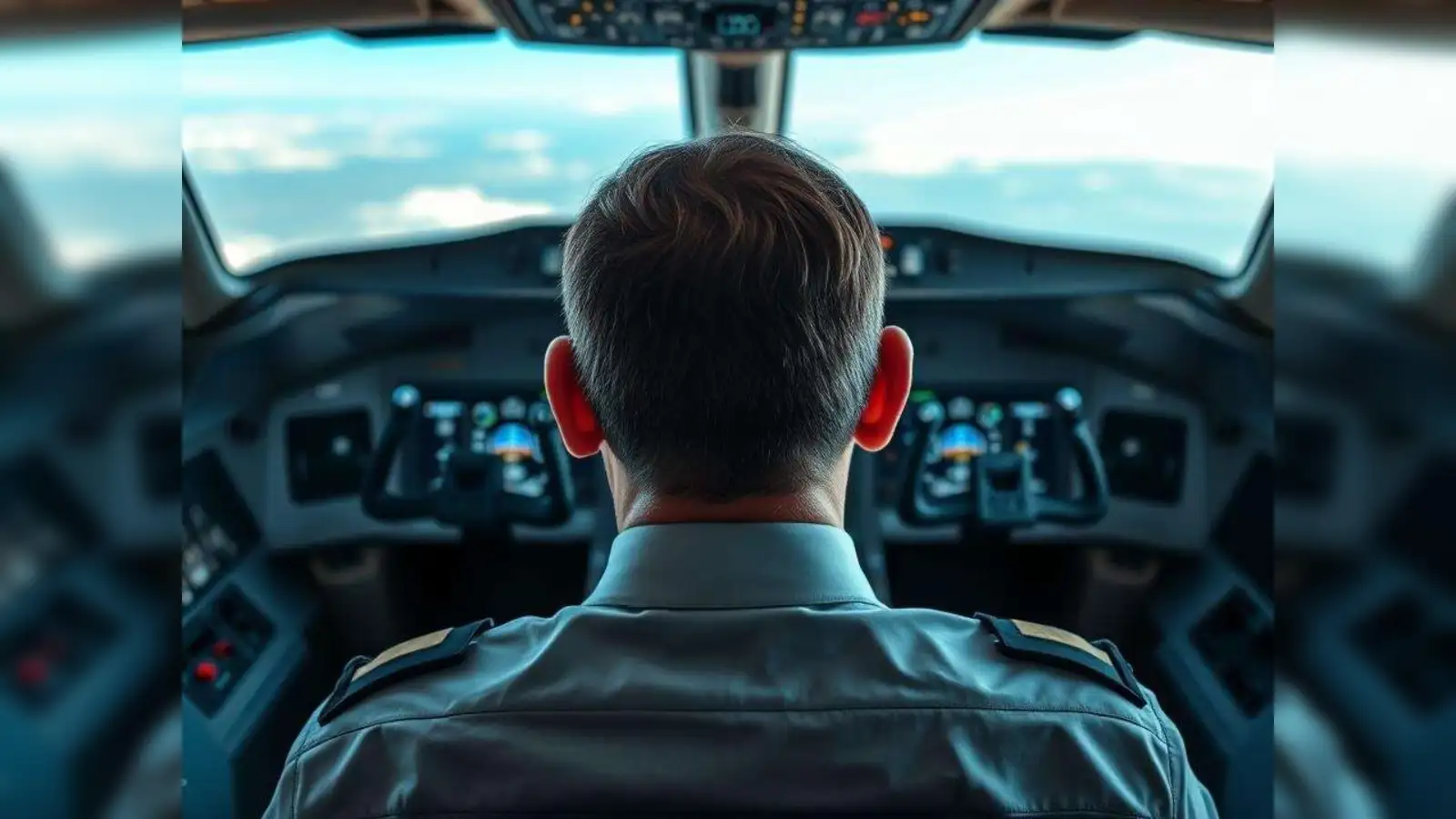The aviation world has been gripped by the tragic Air India Flight 171 crash that occurred on June 12, 2025, when a Boeing 787-8 Dreamliner slammed into a residential area near Ahmedabad’s Sardar Vallabhbhai Patel International Airport, killing 260 people on board and 19 on the ground—one of India’s deadliest aviation disasters in decades. One month later, on July 12, 2025, a preliminary report from India’s Aircraft Accident Investigation Bureau (AAIB) has unveiled shocking details from the cockpit voice recorder, revealing a cryptic exchange between Captain Sumeet Sabharwal and First Officer Clive Kunder that has sent shockwaves through the global community. Coupled with emerging evidence of the captain’s prior mental health struggles, a chilling hypothesis has surfaced: Did Captain Sabharwal intentionally shut off the plane’s engines, leading to the catastrophic descent? As of 11:37 AM on July 18, 2025, this unfolding narrative continues to dominate headlines, sparking debates about pilot mental health, aviation safety, and the search for accountability.
The disaster unfolded just 30 seconds after takeoff, when the London-bound flight, carrying 242 passengers and crew, issued a mayday call before plummeting into a medical college hostel. The sole survivor, British national Vishwashkumar Ramesh, remains in critical condition, while the crash claimed lives on the ground, including medical students and laborers. Initial investigations focused on mechanical failures—engine issues, bird strikes, or flap malfunctions—given the rarity of a Dreamliner crash since its 2011 debut. However, the recovery of the plane’s black boxes—the flight data recorder (FDR) and cockpit voice recorder (CVR)—has shifted attention to human factors, with the AAIB’s preliminary report released on July 12 offering a disturbing glimpse into the cockpit’s final moments.
The CVR captured a pivotal conversation that has fueled speculation. As the plane ascended to 650 feet, the fuel control switches for both engines were flipped from “RUN” to “CUTOFF” within a second of each other, cutting off fuel flow and causing a total power loss. One pilot is heard asking, “Why did you cut off the fuel?” to which the other replies, “I didn’t do so.” The report does not clarify who spoke each line, but the exchange suggests confusion or denial, raising questions about intent. The switches, located between the pilots’ seats and protected by a metal guard and locking mechanism, are designed to prevent accidental movement, making the action deliberate or highly unusual. Moments later, the switches were returned to “RUN,” triggering an engine relight, but the recovery was too late—one engine regained partial thrust, while the other failed to spool up before the crash.

The focus on Captain Sabharwal, 56, with 15,638 total flying hours, has intensified due to his role as the commanding pilot monitoring systems while Kunder, 32, with 3,403 hours, flew the aircraft. A Wall Street Journal report on July 17, citing U.S. officials’ early assessment, suggests Sabharwal may have moved the switches, though the AAIB report stops short of confirming this. The timing—seconds after takeoff—aligns with a scenario where the captain, not the flying first officer, could have accessed the controls. Aviation experts like Shawn Pruchnicki, a former investigator, note, “This kind of error doesn’t typically happen without some evident issue,” hinting at a possible intentional act. The mayday call, made by Sabharwal, came too late to avert the disaster, adding to the mystery.
Adding a troubling layer, reports have emerged about Sabharwal’s mental health history. Neighbors and colleagues in his Mumbai-based residential complex, home to senior aviation officials, described him as deeply devoted to his 92-year-old father, with whom he lived. However, a building guard revealed to the BBC on June 12 that Sabharwal had appeared withdrawn in recent months, skipping evening walks—a routine he cherished. Friends noted he canceled social plans, citing fatigue, and a relative, speaking anonymously, mentioned he sought counseling in 2024 after his father’s health declined. While no formal diagnosis of depression is public, these signs have led investigators to explore whether personal stress contributed to the crash. The AAIB report confirms both pilots passed pre-flight physical and mental checks, but critics argue these assessments—basic self-reports every six months—lack depth, offering no incentive for pilots to disclose mental health issues.
The hypothesis of intentional engine shutdown has sparked outrage and disbelief. If Sabharwal deliberately cut the fuel, it could constitute a rare case of pilot suicide-by-crash, a phenomenon documented in incidents like the 1999 EgyptAir Flight 990 and 2015 Germanwings Flight 9525. Pruchnicki suggests, “Was it intentional, or the result of confusion? The lack of distress signals before the switch movement leans toward intent.” Geoffrey Dell, an air safety specialist, finds it “bizarre” for a pilot to act this way post-takeoff, given the switches’ design. The CVR’s lack of prior alarm or discussion about mechanical failure supports this theory, though the AAIB has not concluded, urging against premature judgments. Families of victims, like Imtiyaz Ali, who lost his brother, sister-in-law, and their children, express frustration, calling the report “vague” and demanding the full CVR transcript.
The aviation community is divided. The Airline Pilots’ Association of India (ALPAI) has objected, accusing the AAIB of bias toward pilot error and calling for transparency. Experts like John Nance argue the switches’ dual-action process makes accidental movement unlikely, while others, including Ehsan Khalid, caution against blaming pilots without systemic evidence. The 2018 FAA Special Airworthiness Information Bulletin (SAIB) on Boeing 737 fuel switch issues—applicable to the 787-8—notes a design flaw with unlocked switches, though Air India’s compliance with advisory checks is under review. Mechanical theories, like fuel contamination or bird strikes, have been ruled out by the report, which found no engine or maintenance faults, shifting scrutiny to human action.
Public reaction has been intense. Social media platforms like X are ablaze with theories, from “Captain’s depression caused this tragedy” to “Murder-suicide at 650 feet.” Sympathy for Sabharwal’s father, now under his sister’s care, contrasts with anger toward Air India, with users demanding cockpit camera mandates. The sole survivor, Ramesh, remains traumatized, telling the BBC, “I can’t believe he’s gone,” referring to his lost brother. Families await DNA-matched remains, with delays fueling protests outside Ahmedabad’s Civil Hospital. Air India has pledged £85,000 per victim’s family and cooperation with the investigation, but trust is eroding.
The investigation, led by the AAIB with support from the U.S. NTSB, UK experts, Boeing, and GE Aerospace, faces a year-long timeline for a final report. Current efforts include analyzing fuel samples, pilot training records, and the aircraft’s 12-year service history. The CVR’s 25-hour capacity and FDR’s detailed data are being decoded in Delhi, but the partial transcript has left gaps. Some speculate Sabharwal’s intent may tie to personal despair—his father’s condition, career pressure, or an unreported crisis—though no suicide note or motive is confirmed. The absence of cockpit image recorders, a debated safety upgrade, limits visual evidence, a point raised by investigators like Peter Goelz.
This crash has reignited calls for mental health reforms in aviation. Experts like Miles O’Brien argue pilots face a “trap”—reporting depression risks grounding, threatening livelihoods. The AAIB’s focus on Sabharwal’s actions, without psychological data, has drawn criticism, with ALPAI pushing for systemic reviews. The tragedy, India’s worst in 30 years, challenges the nation’s aviation safety record, previously lauded by the ICAO, and pressures Boeing amid ongoing 737 Max scrutiny.
As of July 18, 2025, the story remains unresolved. The shocking pilot conversation and Sabharwal’s mental health signs point to a horrifying possibility, but proof is pending. Families demand answers, the industry seeks safeguards, and the world watches as a month of investigation unveils a potential act of despair at 30,000 feet.





